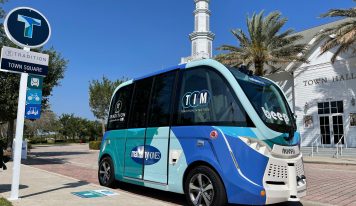A smartphone user can get tripped up easily when in motion as today’s smartphones look for WiFi networks to connect to and oftentimes aren’t able to fully connect to such signals, meaning a phone’s broadband connection can be in limbo. Nothing can be more frustrating than having connectivity issues like this when your GPS software is trying to determine which route has the least traffic and you need to decide whether to go right or left at a busy intersection.
Poor service quality which can be caused by the arbitrary switching to an inferior network leads to churn and churn costs a carrier money. Quality issues don’t just center on data as quite often a challenge for carriers is providing voice service levels which are solid enough to keep a customer happy. There is no perfect wireless carrier and customers are quick to share with one another if a specific company’s service works exceedingly well or poorly where they live or work.
Paradoxically, where there is poor cellular service, at people’s work or homes – there is generally a very strong WiFi signal.
In other words, carriers could be vastly improving their perceived network quality by leveraging WiFi.
Enter Birdstep, a company committed to developing solutions for carriers which ensure what they call Experience Continuity across heterogeneous networks or HetNets consisting of WiFi and cellular. The idea is to have the phone use knowledge about various networks and locations to determine which wireless signal makes the most sense to use. As this happens, the system is measuring signal strength, packets dropped, latency and other factors which could have an impact on the user experience and adjusting accordingly.
Moreover, the connected car has arrived thanks to companies like Tesla and they can seem more like multiple home theater systems thanks to screens littered throughout the cabin. Is it really smart for these cars to download 4K video files over cellular connections while streaming Slacker and using FaceTime on the same network? The answer is obviously no and the solution is to leverage home WiFi as much as possible to reduce cellular costs.
Recently I sat down with Lonnie Schilling, the CEO of the company to learn about their Always Smartest Connected (ASC) technology which doesn’t exclusively offload to WiFi when available, it makes decisions as to which applications should use which network depending on business rules as well as network quality. For example, a cable operator may decide that its content can only be delivered over its own WiFi network and in-fact may have contractual obligations to content producers to ensure this happens.
The magic behind the scenes is the Birdstep’s EasySmart client which resides on devices and is in communication with the company’s SmartANDSF Policy Server.
Sprint is the largest carrier using this service and I had the opportunity to try it out this past weekend and it works as advertised. In an area where Cablevision Optimum Online Ultra 101 was providing about 100 Mbps down and 40 Mbps up and Sprint connectivity was very poor, calls made by a Samsung Galaxy Note 3 defaulted to WiFi.
Of course this technology could be used by content providers, hardware makers and other companies looking to own the user experience. A major Asian consumer electronics concern and HP are working with Birdstep now as an example. The company has an interesting and detailed white paper discussing the various connected car business models which are vehicle-centric, smartphone-centric and network-centric. It’s worth a read if you have interest in how connected cars will evolve. There is another which goes into some detail on how their Experience Continuity works and why it’s needed.
Based on these documents and discussions with Lonnie, there seems to be a tremendous amount of expected innovation in the HetNet market going forward as carriers, device companies car makers vie for dominance in owning the various user experiences. Hopefully as this happens, mobile users using video, GPS and other services will find their phones are smart enough to not always default to WiFi but instead use the best network for the task at hand.






